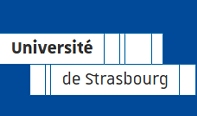Alain M. Jonas "Responsive polymer brushes: from nanopatterning to switchable antibacterial coatings"
Institute of Condensed Matter and Nanosciences – Bio & Soft Matter, Université catholique de Louvain, Belgium
| What |
|
|---|---|
| When |
May 18, 2011 from 02:15 PM to 03:00 PM |
| Where | “Hörsaal Makromolekulare Chemie”, Stefan-Meier-Str. 31, Freiburg |
| Add event to calendar |
|
Abstract
The development of smart surfaces exhibiting a responsive or even adaptive behavior offers tremendous opportunities in fields such as medicine, drug delivery, motion control, or controlled self-assembly. We are currently working on responsive biocompatible polymer brushes, stimulated by external parameters such as pH, temperature or even light. Here, we will more specifically focus on thermoresponsive polymer brushes, which are grafted layers of polymer chains displaying a lower critical solution temperature (LCST) in a specific solvent. The transition of the layer from a swollen to a collapsed state is accompanied by a large decrease of layer thickness and of its solvophilicity, a phenomenon which can be used for a range of applications.
In order to use this collapse transition in the best possible way, we have studied its details for a polymer brush displaying thermoresponsiveness in water, for both continuous films [1-3] and nanopatterned islands [4,5]. We show that nanopatterning affects the collapse transition, and explain this in relation with the structure of the patterned islands. We also show that the collapse of a non-patterned brush is spread over about 20°C, progressing from the bottom of the brush towards its outer part which eventually collapses abruptly in a first order surface transition.
Finally, we use this knowledge to prepare smart bioactive coatings capable to exhibit and hide grafted antibacterial peptides, and to switch the surface from bactericidal to cell-repelling at about 37°C in aqueous solutions [6,7]. This illustrates that the knowledge of the details of the collapse transition can be used to advantageously show or hide drug molecules, thereby offering serious perspectives for applications in the field of medicine.
References
[1] Jonas, A. M.; Glinel, K.; Oren, R.; Nysten, B.; Huck, W. T. S. Macromolecules 2007, 40, 4403–4405.
[2] Laloyaux, X.; Mathy, B.; Nysten, B.; Jonas, A. M. Langmuir 2010, 26, 838-847.
[3] Laloyaux, X.; Mathy, B.; Nysten, B.; Jonas, A. M., Macromolecules 2010, 43, 7744-7751.
[4] Jonas, A. M.; Hu, Z.; Glinel, K.; Huck, W. T. S., Macromolecules 2008, 41, 6859-6863.
[5] Jonas, A. M.; Hu, Z.; Glinel, K.; Huck, W. T. S., Nano Lett. 2008, 8, 3819-3824.
[6] Glinel, K.; Jonas, A. M.; Jouenne, T.; Leprince, J.; Galas, L.; Huck, W. T. S. Bioconj. Chem. 2009, 20, 71.
[7] Laloyaux, X.; Fautré, E.; Blin, T.; Purohit, V.; Leprince, J.; Jouenne, T.; Jonas, A. M., Glinel, K., Adv. Mater. 2010, 22, 5024-5028.

